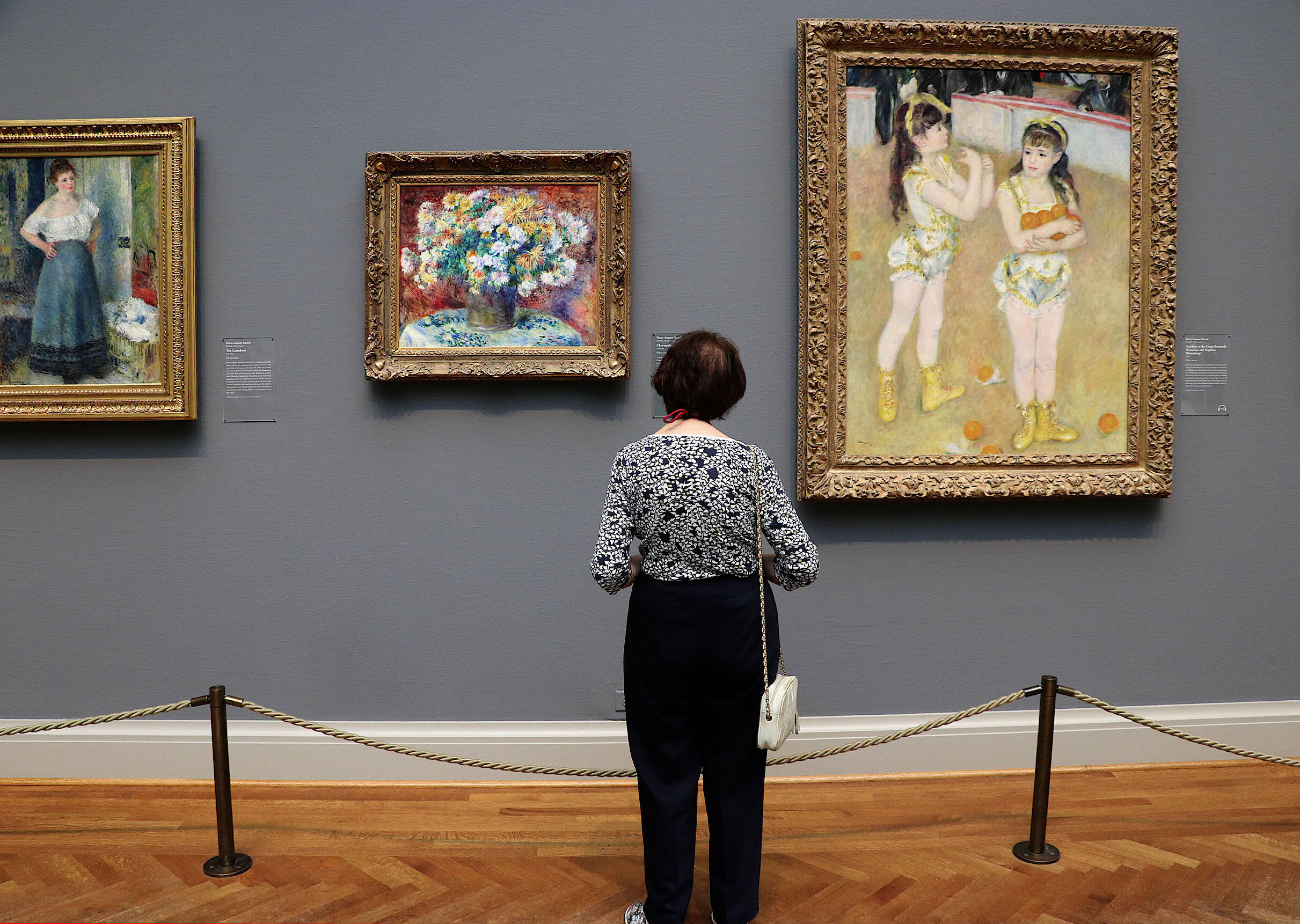When I visit museums I probably spend equal time watching the people looking at the art as I give to the art itself. While visiting the Art Institute of Chicago I happen to be located in a spot to watch a woman in her quiet world admiring the paintings. It appears she’s taken by the floral still life while the painting at right (Renoir’s “Acrobats at the Cirque Fernando” 1879) has one of the little girls looking directly at this woman. The figure in the painting at left is also studying the museum visitor.
The two little circus girls in this painting are Francisca and Angelina Wartenberg, who performed as acrobats in the famed Cirque Fernando in Paris. Although they were depicted in the center of a circus ring, the sisters actually posed in costume in Renoir's studio, enabling him to paint them in daylight. Here he portrayed them just as they have finished their act and are taking their bows. One sister turns to the crowd, acknowledging its approval, while the other faces away with an arm full of oranges, a rare treat that the audience has tossed in tribute.
One of the most fascinating things about masterworks is to ask ourselves: “Are we really seeing the authentic finished piece?” Putting aside forgeries, seeing the authentic original painting might have changed over time. Canvas, wood, and paint are exposed to elements constantly and it’s possible that the original is not truly what it was the day it was signed.
Renoir painted during the last twenty years of his life even after his arthritis severely limited his mobility. He developed progressive deformities in his hands and in his right shoulder, requiring him to change his painting technique. Renoir remained able to grasp a brush, although he required an assistant to place it in his hand.


